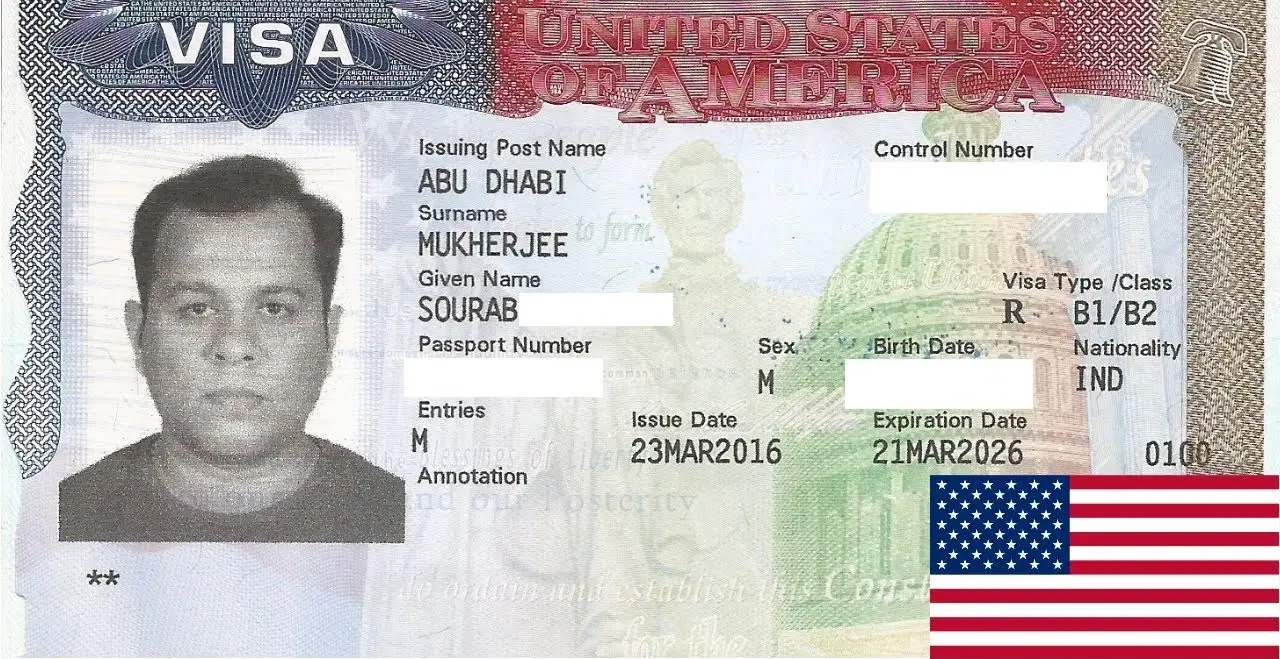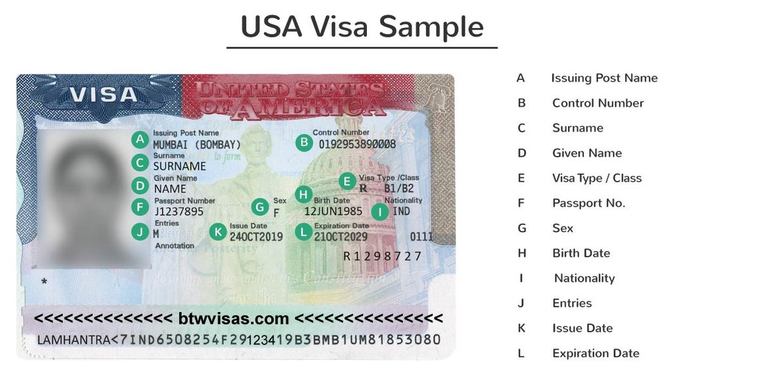Types Of US Visas Explained: L1, H1B, B1/B2, and More
Opening Opportunities: Crucial Info on US Visas for Indian Citizens
Maneuvering the complexities of US visa options is important for Indian people aiming to check out opportunities in the US. With different classifications varying from momentary site visitor visas to paths for long-term residency, comprehending the nuances of each can noticeably affect one's trip. This discussion will certainly highlight vital details, including application procedures and qualification criteria, that can equip individuals in their search of brand-new experiences. As we unload these essential facets, the inquiry occurs: what approaches can one utilize to boost their opportunities of an effective application?
Summary people Visa Kind
When traversing the facility landscape of US immigration, understanding the different kinds of visas readily available is crucial for Indian residents seeking entrance into the US (US Visas For Indian Citizens). The US immigration system is primarily categorized into two wide categories: immigrant visas and non-immigrant visas
Immigrant visas are marked for those planning to live completely in the US. These consist of family-sponsored and employment-based visas, where applicants generally call for an enroller. Non-immigrant visas, on the various other hand, cater to individuals seeking short-lived home, such as tourists, organization site visitors, and those traveling for particular objectives like work or research.
Within the non-immigrant group, a number of visa kinds exist, consisting of B-1/ B-2 for organization and tourism, H-1B for specialized professions, L-1 for intra-company transferees, and O-1 for individuals with remarkable capabilities. Each visa has unique qualification needs and application procedures, requiring detailed research to determine the suitable category.
Understanding these categories is necessary for Indian residents, as it allows them to browse the application process better, ensuring they select the appropriate visa type to fulfill their specific requirements and goals. US Visas For Indian Citizens.
Trainee Visa Options
For Indian citizens striving to research in the US, student visas provide a vital path to seek scholastic opportunities. The main visa categories for pupils are the F-1 and M-1 visas.
The F-1 visa is assigned for academic pupils enrolled in a full time program at an accredited organization, such as universities and universities. This visa permits trainees to take part in on-campus work and, under certain conditions, take part in optional useful training (OPT) after finishing their degree, providing valuable work experience in their field.
Alternatively, the M-1 visa is planned for trade or non-academic programs. It deals with trainees going after technological or trade training, allowing them to sign up in non-degree programs. M-1 visa owners might join functional training, yet it is generally a lot more restricted compared to the F-1 classification.
To acquire a pupil visa, applicants should secure admission to an U.S. establishment, get a Kind I-20, and demonstrate economic capacity to support their education and learning and living expenditures. Recognizing these visa options is considerable for Indian citizens planning to commence their academic trip in the US.
Visa Categories
Many Indian residents looking for job opportunity in the US may consider different categories tailored to different professional requirements and qualifications. One of the most popular is the H-1B visa, designed for experienced employees in specialty professions calling for a college degree or its equal. It enables US employers to briefly employ international employees, with a cap on the number of visas provided each year.
Another crucial group is the L-1 visa, which assists in the transfer of staff members within international firms. The L-1A visa is for supervisors and executives, while the L-1B visa is for staff members with specialized understanding.
The O-1 visa accommodates individuals with remarkable abilities in their field, including science, arts, or company. For farming or seasonal work, the H-2A and H-2B visas are offered, permitting employers to employ international employees for temporary placements.
Family-Based Immigration
Family-based migration offers a pathway for US people and lawful long-term locals to rejoin with their relatives from India. This migration group is basic for maintaining familial bonds and helping with the combination of member of the family right into USn society. US people can seek for immediate relatives, including spouses, kids, and moms and dads, without dealing with yearly restrictions on visas. This expedited process significantly decreases waiting times for these close family members connections.
In comparison, legal permanent residents might sponsor partners and unmarried kids, yet they undergo yearly caps, leading to longer wait times. The family-sponsored migration system is divided right into two primary categories: prompt relatives and household choice classifications. The previous consists of those that have a straight relationship with a united state citizen, while the latter includes farther loved ones, such as siblings and wedded kids of residents, and children of legal permanent locals.
For Indian residents seeking family-based immigration, recognizing the nuances of this system is crucial. Proper paperwork and adherence to application protocols are essential for effective sponsorship. By steering with these intricacies, households can function towards rejoining and constructing their lives with each other in the US.
Permanent Residency Process
The process of getting permanent residency in the US involves several crucial visa classifications customized for Indian citizens. Comprehending the application steps, consisting of required documentation and qualification standards, is important for a successful outcome. Furthermore, possible applicants ought to be aware of the anticipated timeline and details requirements connected with each category.
Visa Categories Review
While going across the complexities of the US migration system, Indian citizens seeking permanent residency should familiarize themselves with different visa groups customized to various situations. The key pathway for irreversible residency is via employment-based visas, which are classified into several choices, consisting of EB-1 for individuals with phenomenal capabilities, EB-2 for professionals holding postgraduate degrees, and EB-3 for proficient employees. Each group has specific eligibility demands and handling times.

Variety visas, although limited in number, provide a chance for people from underrepresented nations to request permanent residency with a lotto game system. Additionally, altruistic alternatives such as asylum and evacuee condition offer pathways for those encountering oppression.
Understanding these visa groups is important for Indian residents, as they considerably influence the strategy for getting permanent residency in the US. Each category's nuances and needs demand cautious factor to consider to straighten with private conditions and goals.
Application Process Actions
Steering the application process for permanent residency in the US entails a number of essential actions that have to be carefully complied with to ensure an effective result. The journey usually starts with establishing the proper immigration classification, such as employment-based or family-sponsored visas. Applicants must gather vital paperwork, including evidence of eligibility, monetary declarations, and personal recognition.
Once the group is recognized, the following step is to file the Form I-130 (Petition for Alien Loved One) or Kind I-140 (Immigrant Application for Alien Employee), depending on the basis of the application. Following the approval of the petition, applicants will require to complete the National Visa Facility (NVC) processing by sending the needed costs and forms.
Next off, the candidate needs to go through a medical checkup and get authorities clearance certifications. As soon as these are completed, an interview will be scheduled at the US consular office or consular office. It is vital to prepare completely for this interview, as it can substantially impact the decision on the application. Upon approval, the candidate will certainly get their visa, granting them permanent residency in the United States.
Timeline and Demands
Charting the timeline and requirements for obtaining long-term residency in the US is crucial for Indian citizens looking for to develop a long-lasting presence. The procedure mostly hinges on employment-based or family-sponsored paths, each with specific prerequisites and timelines.
For employment-based migration, the process normally begins with a labor qualification, which can take numerous months. Once authorized, the employer submits a Kind I-140, Immigrant Request for Alien Worker, which can take an additional 6 months to a year, relying on the processing facility. Following I-140 authorization, candidates may require to wait for their concern day to end up being existing, which can differ considerably based upon the candidate's category and native land.
For family-sponsored migration, US residents can petition for instant loved ones, which normally leads to faster handling. Various other family members categories might include much longer wait times due to annual caps.
Application Treatments
Comprehending the application procedures for US visas is necessary for Indian citizens looking for entrance into the US. US Visas For Indian Citizens. This section will certainly supply a summary of different visa groups and describe the detailed process for using. By following these standards, candidates can navigate the intricacies of the visa efficiently
Visa Categories Introduction
Navigating the numerous visa classifications offered to Indian people can be a complicated procedure, however it is important for those seeking to take a trip, work, or research in the US. The US visa system is categorized primarily into non-immigrant and immigrant visas, each offering distinctive functions.
Non-immigrant visas, such as B-1/ B-2 for service and tourism, F-1 for scholastic research study, and H-1B for specialized work, allow short-lived remains. Applicants need to show their intent to return to India after their visit.
On the other hand, immigrant visas, consisting of family-sponsored and employment-based categories, offer a pathway to long-term residency. These visas usually call for sponsorship from a family member or company in the US, together with a rigorous application process.

Step-by-Step Refine
Typically, the application procedure for US visas includes several crucial actions that candidates have to meticulously follow to here guarantee a smooth experience. The primary step is to identify the ideal visa category based upon the objective of travel, such as job, study, or tourism. When the group is recognized, applicants must finish the on the internet DS-160 kind, offering exact individual details and traveling details.
After submitting the DS-160, applicants need to pay the visa fee, which varies by visa type. Next, arrange a visit for a visa interview at the nearest US Consular office or Consulate. Types Of US Visas. It is critical to plan for the interview by event needed papers, including a legitimate visa, visa verification, charge payment invoice, and any supporting documentation particular to the visa category
On the day of the meeting, arrive punctually and gown suitably. Throughout the interview, be prepared to respond to concerns regarding your traveling intents, financial security, and connections to India. Finally, if accepted, the visa will be marked in the visa, permitting traveling to the US. Complying with these actions assures an efficient and efficient application process for Indian residents.
Tips for a Successful Application

Make sure that all kinds are finished properly and truthfully. Small mistakes or noninclusions can lead to delays and even denials. It is recommended to collect all required supporting papers, including economic declarations, employment letters, and evidence of connections to India, which show your intent to return post-visit.
Get ready for your visa meeting by practicing feedbacks to typical questions connected to your itinerary and background - US Visa Requirements. Self-confidence and clarity can greatly impact the officer's impression. Finally, consider looking for assistance from respectable immigration consultants if you feel overwhelmed
Frequently Asked Inquiries
What Are the Processing Times for US applications?
Handling times for US visa can vary substantially based on the visa type, application quantity, and the applicant's location - Types Of US Visas. Typically, candidates ought to anticipate a processing duration ranging from a couple of weeks to several months
Can I Change My Visa Status While in the US?
Yes, people can transform their visa status while in the US, given they fulfill eligibility needs and comply with correct procedures. It is essential to submit the proper application with US Citizenship and Immigration Services (USCIS)
Are There Age Boundary for US Visa Applicants?
There are typically no certain age limits for US visa candidates; however, particular visa categories might have age-related eligibility standards. It is necessary to examine the requirements for every visa type to assure conformity.
What Prevail Reasons for Rejection?
Common factors copyright denial include inadequate economic resources, failure to show connections to the home country, insufficient application, lack of appropriate documentation, previous migration infractions, and failure to meet eligibility criteria for the particular visa category.
Exactly How Can I Appeal a Visa Denial Decision?
To appeal a visa rejection, review the consular policeman's factors, gather sustaining paperwork, and submit a formal appeal to the appropriate authority, making sure to follow defined timelines and procedural demands for the charm procedure.